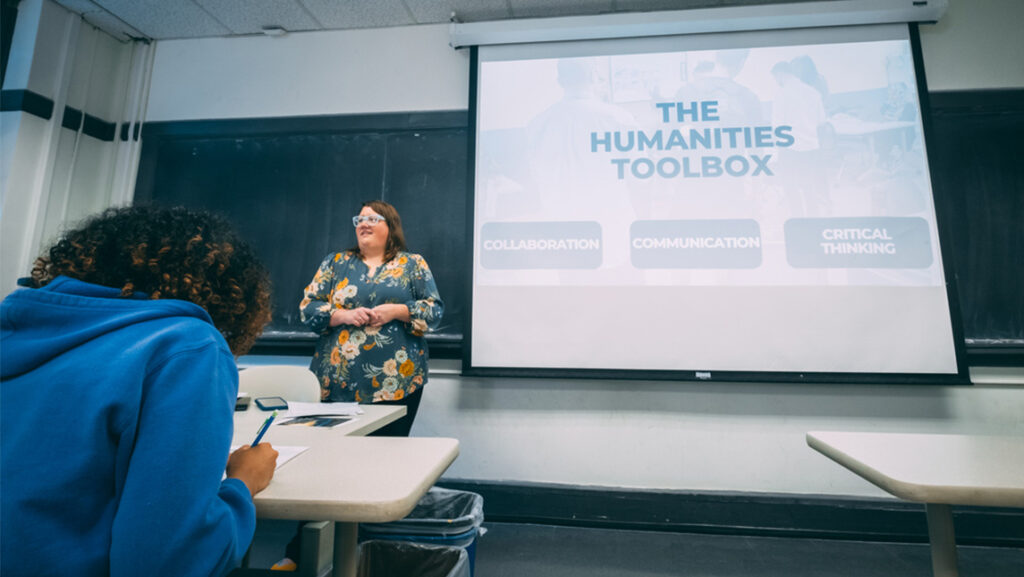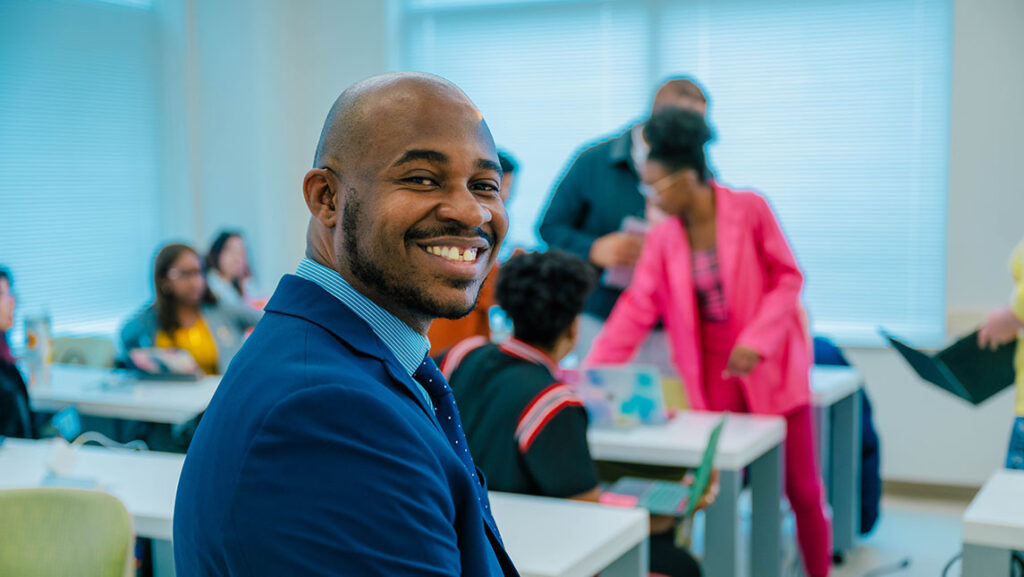Repost from UNCG NOW.
A city girl from Metro Detroit, Ashley Bryant had never even slept in a tent, so hunting for fossils in the punishing summer sun of the Wyoming badlands was not on her to-do list.
Not until this summer, when one professor challenged her to expand her horizons.
In July, Ashley, a senior biology major, spent three weeks in Wyoming’s Great Divide Basin, digging in sandstone deposits as part of anthropology professor Dr. Robert Anemone’s crew. Camping under the stars. Encountering pronghorn antelope and mustangs. Unearthing 50-million-year-old fossil mammals.
“I felt I was a part of something much bigger than myself,” she says of the dig. “I was part of a family of people who are superstars at what they do, and it was incredible being the amateur, and still being able to find fossils.”
An anthropology class started it all. When she signed up for Anemone’s course on race and human diversity, Ashley, who plans to become an OB-GYN, quickly began to make connections. The life sciences and the formal sciences, natural processes and demographics, all came together for her.
“By the second week I was trying to draw similarities between two worlds that didn’t really mix,” she says. “My whole world opened up for me.”
Then Anemone offered her an internship in his lab. She scans the often fragile pre-historic fossils he has found in the Great Divide Basin, and sends the scans to a 3-D printer. The printer produces plastic replicas that can be used as teaching tools.
One particular sandstone deposit in the basin, dubbed Tim’s Confession, has yielded a huge cache of fossils for Anemone and his team.
When Anemone asked Ashley if she’d like to go along on this summer’s dig, she couldn’t pass it up. “Once I develop an interest I have no problem going where it takes me. I’m not that person who is interested in just one thing. I have to have a variety of knowledge to pull from.”
She quickly got over her fears of venomous snakes and scorpions, which turned out to be mostly unfounded. She found fossils from the start, but she didn’t find her pièce de résistance until four days before she went home: a prehistoric jaw fossil complete with teeth.
“Jaws are the Holy Grail of being in the field,” she says. Jaws can tell you what an animal ate, what sorts of muscles were attached to the jaw, what sort of teeth the creature had.
For a future doctor, studying animal fossils is an excellent anatomy primer.
“It definitely showed me that the career I’m interested in, medicine, overlaps with something else I’m interested in, digging up fossils. It’s kind of when you learn to play an instrument — you have to learn to read the music first. In the field it all came together; it all made sense.”
Weeks later, she still misses the scent of sagebrush and the vast desert landscape that sleeps each night under a starry blanket.
Story by Michelle Hines, University Relations
Photography by David Wilson, University Relations
![Featured Image for A Whole New World [Undergraduate]](https://research.uncg.edu/wp-content/uploads/2014/08/AshleyBryant-25867-F-580x350-1.jpg)


